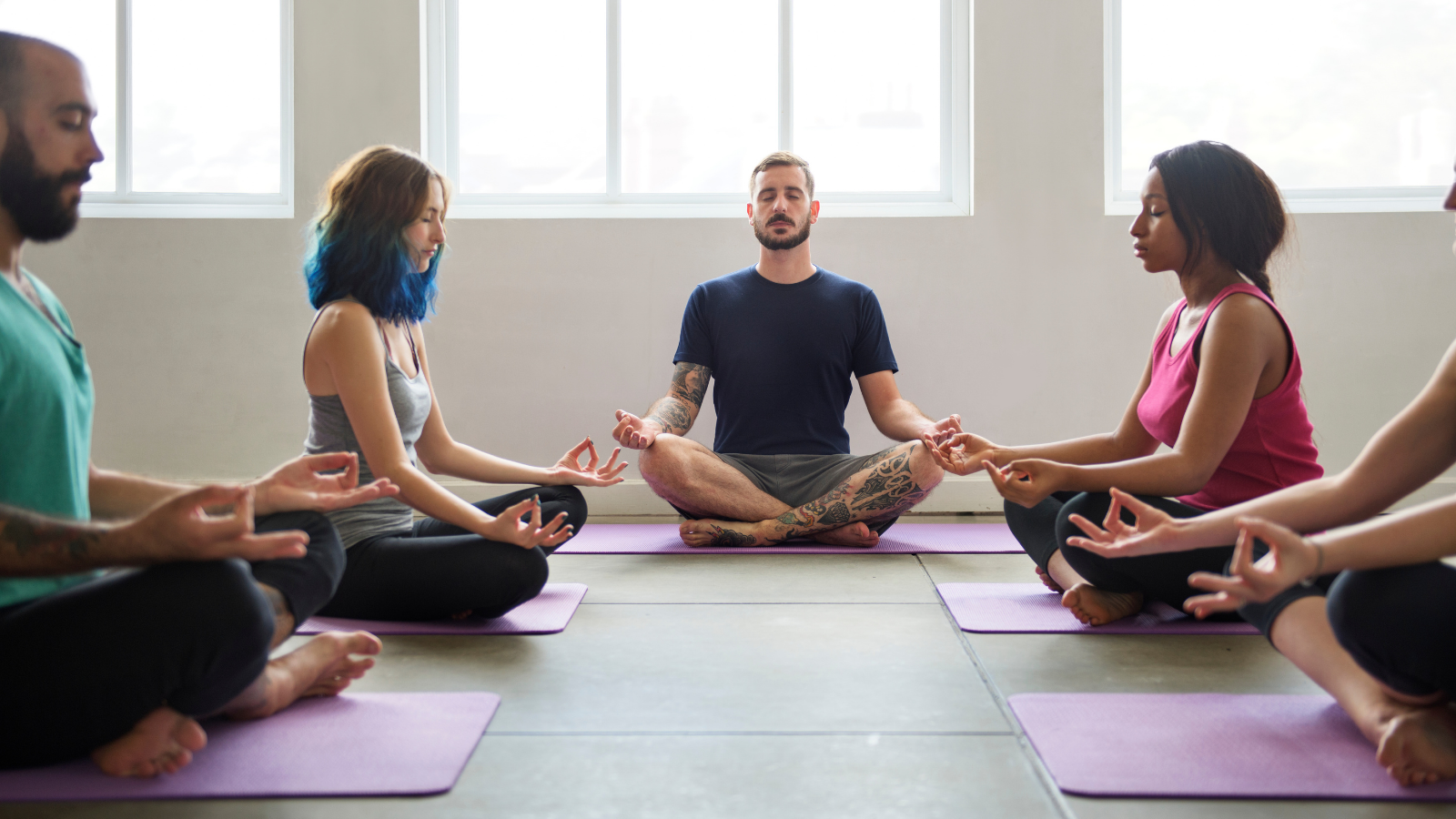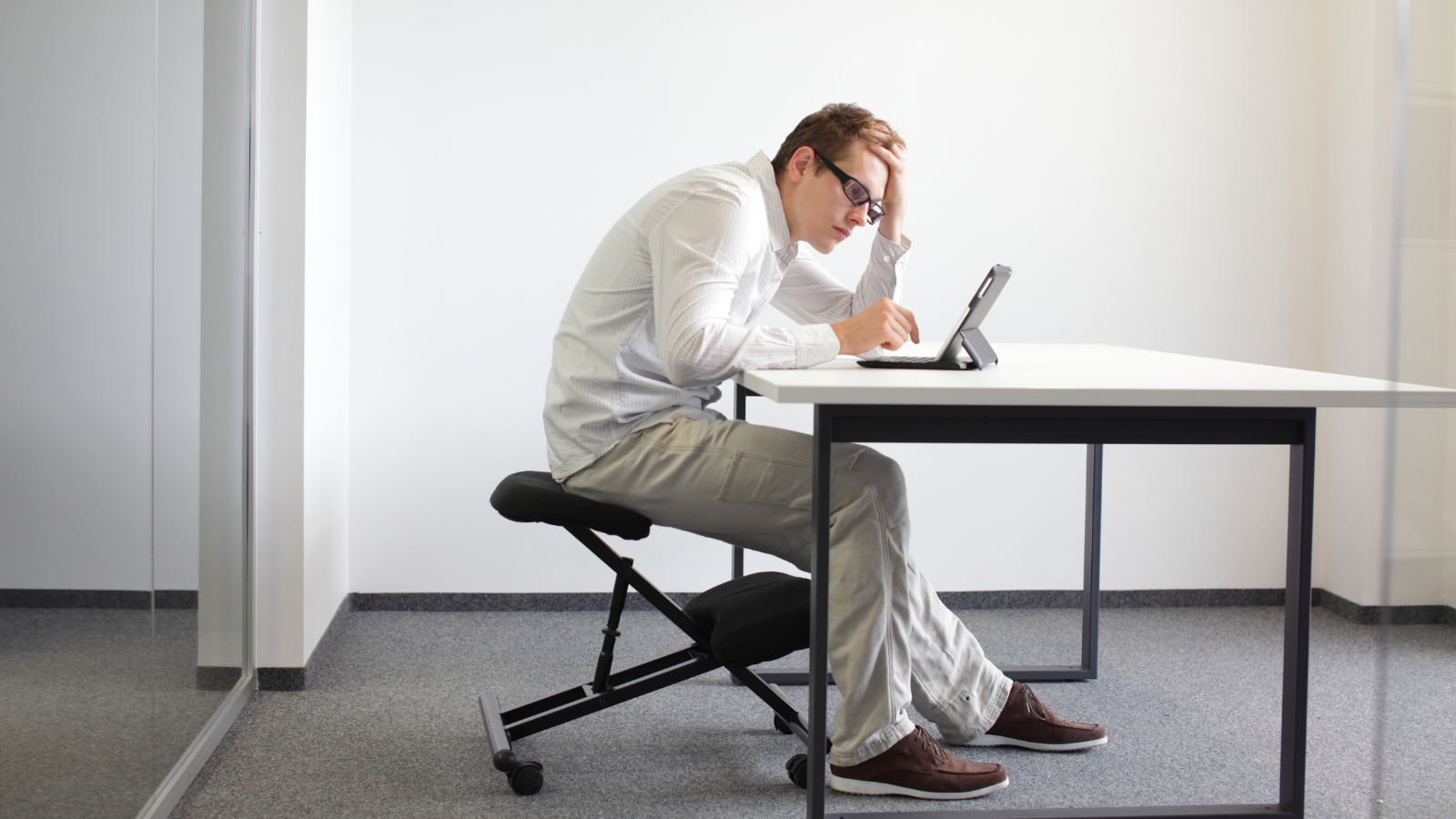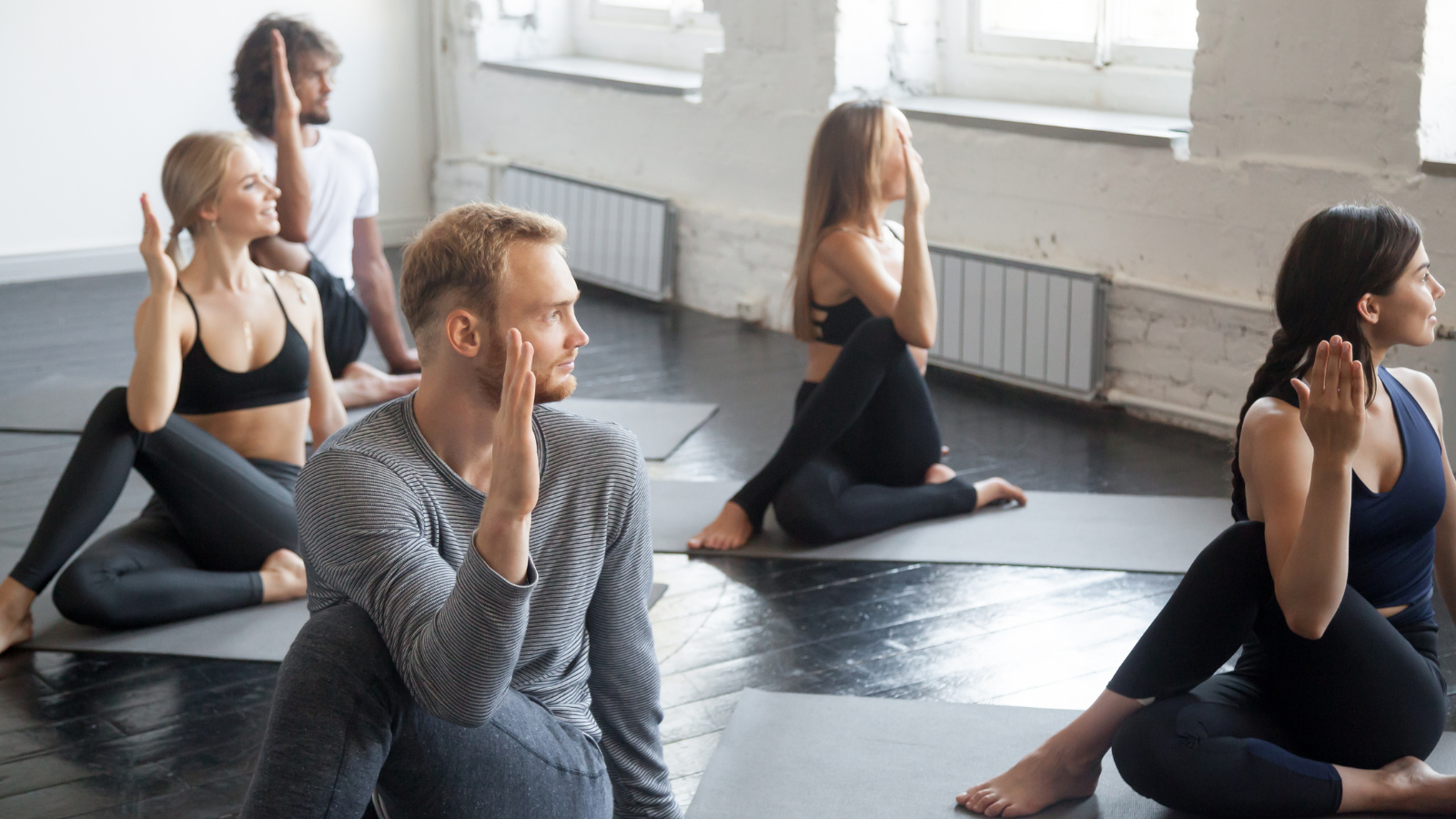View basket (0 items $0.00)

Unlock Your Body: Release Chronic Tightness
Many people ask me how long it will take them to release chronic tightness or get out of pain. I wish I could answer this question, but the truth is that everyone’s patterns of muscular tension and pain are unique. There is no way for me or anyone else to accurately predict a time frame for the learning and healing process. Some people experience significant benefits within the first few days of practicing the exercises, while for others it takes much longer.
I’m writing this post to provide guidance so that you can approach your personal learning and healing process in the most beneficial way.
Chronic Tightness: How We Develop Patterns
 The most important thing to understand is that as human beings, we each develop patterns of muscular tension that are completely unique. This is why the process of getting out of pain and chronic tightness is unpredictable. Our patterns develop based on the activities we do on a regular basis, the injuries we sustain, how we react to stress, and even our personalities.
The most important thing to understand is that as human beings, we each develop patterns of muscular tension that are completely unique. This is why the process of getting out of pain and chronic tightness is unpredictable. Our patterns develop based on the activities we do on a regular basis, the injuries we sustain, how we react to stress, and even our personalities.
We develop our own ways of moving gradually throughout our lives. These patterns become noticeable as early as one or two years of age. Toddlers may habitually sleep with their heads turned to one side, hold their arms in a certain way as they walk, or always stand up in the same way. As we repeat the same motor patterns over and over, we begin to develop residual muscle tension in the muscles involved in these patterns.
As children, the residual muscle tension we build up gives us control over our posture and allows us to move and react quickly. At this age, as we learn skills like writing and throwing and kicking a ball, our handedness begins to play a large role in the muscular patterns we develop.
Reinforcing Our Patterns
As teenagers, we may start to notice some negative effects of our learned patterns. If we play sports, we might feel chronic tightness or soreness that doesn’t go away in between practices, or we might develop a repetitive-use injury. Teenagers who spend a lot of time on their phones or computers may feel tension in their shoulders or notice that their heads and shoulders are rounding forward. It’s also increasingly common for stress to cause or contribute to muscle tension and poor posture during the teenage years.
The process of developing muscle memory continues throughout our lives, whether we lead very active or very sedentary lifestyles. For many of us, our lifestyles become more repetitive and less varied the older we get. We work at our job every day, doing the same activities. We may have a few different hobbies or types of exercise that we do on a regular basis.
With repetition, our muscular patterns become deeply learned, and we develop more and more residual muscle tension in the muscles that we use the most. And as we take on more responsibilities, and the memories of past stressful experiences build up in our psyche, the effect of stress on our muscular patterns continues to increase with age.
When you see an older person who is stuck in a certain posture and moving stiffly—this is a result of the gradual buildup of muscle tension. Their muscles are simply tight.
When Chronic Tightness Sets In
Without conscious intervention, most of us will gradually lose the ability to fully contract and release our muscles and articulate our movements. Imagine the fluid, supple movement of a dancer. This is what most of us will unconsciously lose as our body slowly gets locked down.
As we build up muscle tension, we also lose the sensation of our muscles and awareness of how we are standing and moving. We slowly become less in tune with our bodies, and this makes it all the more difficult to make changes.
Unfortunately, the process of building up muscle tension is so gradual that most of us don’t notice it until we feel chronic soreness or pain. It often takes many years or many separate instances of pain or injury to wake us up to the fact that we need to make changes in how we use our body and how we react to stress.
Getting Out of Pain
 Many people who find Clinical Somatics are searching for a way to get out of pain. If you’re in pain, your learned muscular patterns have gotten to the point that your muscles are chronically painful or they’re putting strain on your skeleton, causing joint or nerve pain or even structural changes in your joints and bones.
Many people who find Clinical Somatics are searching for a way to get out of pain. If you’re in pain, your learned muscular patterns have gotten to the point that your muscles are chronically painful or they’re putting strain on your skeleton, causing joint or nerve pain or even structural changes in your joints and bones.
When you’re in pain, you just want to get out of pain. I completely understand this—I’ve been there. Many people ask me how long it will take for them to get out of pain. But since everyone’s muscular patterns are unique, there’s no way for me to predict this. Everyone takes a different path in getting to the point of pain or injury, so everyone’s path out of pain will be different. That’s why unlearning your muscular patterns and getting out of pain must be a self-guided, exploratory process.
The process of retraining your nervous system requires the first-person sensation of being in your body that only you can experience, and active movement that only you can perform. Through the process of practicing Clinical Somatics exercises, you become the expert of your own body.
As Gerda Alexander said in an interview for Yoga Journal in 1986:
“It is better to help people stand on their own two feet, in every sense of the word. It is important, in treatment, not to give and do more than is necessary, so that the other can rely on himself. It is not that I am the great master and give you help. Rather, I can introduce you to my work for your own self-discovery.”
There’s No Prescription for Alleviating Chronic Tightness
 It is normal for you to want someone to give you the answers: to tell you exactly which exercises to do, how many times to do them, how long it will take to get out of pain, and what you’ll feel as you go through the process. We’ve been trained to ask for prescriptions. But in reality, a prescription is rarely the answer. You need to combine the knowledge you learn from experts with your internal experience. Through a process of self-exploration, you must become the expert in your own functioning; this is the only path to true health.
It is normal for you to want someone to give you the answers: to tell you exactly which exercises to do, how many times to do them, how long it will take to get out of pain, and what you’ll feel as you go through the process. We’ve been trained to ask for prescriptions. But in reality, a prescription is rarely the answer. You need to combine the knowledge you learn from experts with your internal experience. Through a process of self-exploration, you must become the expert in your own functioning; this is the only path to true health.
The Learning Process
There are three aspects of the Clinical Somatics learning process that are often very challenging for people when they begin learning the exercises. The first we just talked about—is the challenge of having to focus your attention inward to discover the answers. We’ve been taught to rely on doctors and other health experts to fix what’s wrong with us, but that approach rarely works or has a lasting effect.
The second challenge is getting past the “quick fix” mentality. We are a goal-oriented society; we want the answer or the end result now.
But developing internal awareness and control of your body doesn’t work that way. Believe it or not, you will experience more benefits and actually make faster progress if you focus on the learning process rather than the end goal.
How to Practice the Exercises for Alleviating Chronic Tightness
 How do you do this? Practice the exercises every day, as long as this is comfortable for you. Close your eyes, and focus all your attention inward on what you’re feeling in your body as you breathe and move. Approach the exercises each day as if it is the first time you’ve done them. This is essential. This is how your nervous system will learn a new way of standing and moving. After 12 years, I still feel new things and learn new things about my body every day.
How do you do this? Practice the exercises every day, as long as this is comfortable for you. Close your eyes, and focus all your attention inward on what you’re feeling in your body as you breathe and move. Approach the exercises each day as if it is the first time you’ve done them. This is essential. This is how your nervous system will learn a new way of standing and moving. After 12 years, I still feel new things and learn new things about my body every day.
You’ll figure things out along the way. I remember many times over the past 12 years when I would release an area of my body, and suddenly be standing or moving in a new way, and think, “Ah, that’s it! I figured it out!” And then a week or a month later I’d release something else or sense something new and think, “Okay, that’s it!” As you go through this process—which can and should be a lifelong process—you will have many, many of these “ah-ha” moments.
You will have good days and bad days. The process of change rarely follows a straight upward path. Your muscles may feel sore as they adjust to new ways of using them. As the sensation of your body increases, some things you feel may not be entirely pleasant. You may get injured, stressed out, or have an old tension or pain pop back up. This is all normal.
I like to compare the process of releasing tension in your body to peeling an onion. Muscle tension doesn’t actually exist in layers like this, but it’s a useful comparison. Your muscles will not release completely all at once. The process of releasing them happens gradually, in the same way, you built up the tension. Likewise, the process of changing your posture and movement patterns happens gradually.
Practice Patience
 Whether you are 20, 50, or 80 years old when you begin this process, keep in mind that you’ve spent your entire life developing the habitual patterns that now cause your tension and pain. Your nervous system and the tissues of your body can only change so fast, so be patient with yourself and with the process.
Whether you are 20, 50, or 80 years old when you begin this process, keep in mind that you’ve spent your entire life developing the habitual patterns that now cause your tension and pain. Your nervous system and the tissues of your body can only change so fast, so be patient with yourself and with the process.
Embarking on a process to change your habitual patterns is like beginning a journey without knowing exactly when you’ll arrive or what you’ll encounter along the way. You simply have to start. Take it one step at a time, one day at a time, and know that you are heading in the right direction.
Slow and Gentle is the Way to Relieve Chronic Tightness
The third challenging aspect of the learning process is that you must do the exercises extremely slowly and be gentle with yourself. We believe in the adage “no pain, no gain.” Even massages, which should be completely relaxing, are often painful during or afterward. Do people think this is working? Why do we think that pain is beneficial?
When you push your body to the point of pain, it will tighten up responsively. There is no benefit to painful massage, stretching, or manual adjustments. Stop doing these things, and stop letting other people do them to you.
When you move your body slowly and gently, your muscles relax. Even though Clinical Somatics exercises are extremely slow and gentle, I believe that some people do them with too much tension and force. Doing the exercises this way greatly decreases their benefit.
Instead of forcing a movement, instead, simply allow it. This simple shift in mentality will have an enormous effect on your process.
How to Practice Mindfully
 When you’re learning Clinical Somatics exercises, take the time to focus on each exercise individually and notice how it feels. What muscles are you contracting and releasing in the movement? Always practice the standing awareness exercise before and after. How do you feel before and after practicing the exercise?
When you’re learning Clinical Somatics exercises, take the time to focus on each exercise individually and notice how it feels. What muscles are you contracting and releasing in the movement? Always practice the standing awareness exercise before and after. How do you feel before and after practicing the exercise?
By taking the time to do this, you’ll discover which exercises are most helpful in releasing your patterns of tension. Over time, your regular daily practice—a series of exercises that best work with your unique patterns—will naturally evolve.
If you stick to your regular daily practice most of the time, revisit the other exercises once in a while. You’ll learn something new every time you do.
If you learn an exercise that doesn’t feel good or causes pain, simply don’t do it for now. You can always come back to it later. You might find that in a month or two, the exercise has become comfortable. You can also modify the exercise by making it a smaller movement: Cut the “size” of the movement in a half or even a quarter, making it a very small, subtle movement, and see if it’s comfortable.
How Pandiculation Can Help Alleviate Chronic Tightness
 From the beginning, learn how to do a pandiculation and get clear on how it feels. If you’re doing online courses, be sure to watch the bonus video “Ultimate Pandiculation,” which gives guidelines and tips for getting the most benefit from every pandiculation you do. When you’ve completely released a movement, you should feel a sense of complete relaxation and release in the muscles you’ve just worked with—like the tension is melting away.
From the beginning, learn how to do a pandiculation and get clear on how it feels. If you’re doing online courses, be sure to watch the bonus video “Ultimate Pandiculation,” which gives guidelines and tips for getting the most benefit from every pandiculation you do. When you’ve completely released a movement, you should feel a sense of complete relaxation and release in the muscles you’ve just worked with—like the tension is melting away.
As you learn the exercises, always notice how your right and left sides feel different:
-
Does one side feel more coordinated than the other?
-
Do you have more sensation on one side?
-
Does one side feel tighter?
-
Are your muscles simply working differently on each side?
If you can identify which side feels “better” or more coordinated, then slowly go back and forth from side to side, and try to replicate what you feel in your more coordinated side with your other side. This process will allow you to learn never-ending things about how you’re habitually using your body.
Don’t be afraid to practice the exercises more with one side, or sometimes only with one side. This can help balance out different muscle tension levels and patterns on your right and left sides.
How to Practice Mindfully in Daily Life
Every five or ten minutes throughout the day, take a moment to check in with yourself. Take a deep breath down into your lower belly, slowly exhale, and release all the unnecessary muscle tension you’re holding on to throughout your body. Doing this will make you very aware of where you hold your tension, and will also train you to stop holding onto that unnecessary tension.
Notice how your regular workout or activities may be contributing to your tension or pain. How are you using your body when you do these activities? How do you feel after doing these activities?
Engaging in repetitive, habitual physical activities can slow your progress, so when going through the process of releasing muscle tension and changing learned patterns, it can sometimes be helpful to reduce certain activities or change up your routine.
What Activities Contribute to Chronic Tightness?
 There are many other aspects of your daily life that can cause or contribute to pain and chronic tightness. Take the time to notice how you’re using your body and the tension you feel in your body when you:
There are many other aspects of your daily life that can cause or contribute to pain and chronic tightness. Take the time to notice how you’re using your body and the tension you feel in your body when you:
-
Feel stressed or tired
-
Drive your car
-
Look down at your phone
-
Sit at your desk and work at your computer
-
Sit when relaxing or watching television
-
Sleep
How to Keep Your Learning Process Going
By the end of one of my online courses or series of lessons or classes with another Clinical Somatics practitioner, you may have experienced a significant reduction in your pain and improvement in your functioning. However, this does not mean that your learning process is over.
We spend our entire lives developing habitual muscular patterns, and for a long time, they do not cause us chronic tightness or pain. Finally one day, we begin to feel pain or experience damage to the actual structure of our body. The habits that are causing this chronic tightness, pain, or damage have been present for many years. While it may take a relatively short time to get out of pain, the habits are still present, and it can take years to fully unlearn these damaging patterns.
While some people do their Somatics exercises just enough to keep themselves out of pain, others go further with the process and continue doing the exercises for the rest of their lives. A regular
Somatics practice is extremely enjoyable and rewarding. It is a process of continually discovering new sensations and new abilities in your body, and becoming aware of how wonderful your body is supposed to feel.
Somatics Exercises Help You Form Healthy Habits
Regular practice of Somatics exercises is necessary not only to change deeply learned patterns but also to release the habitual tension you build up each day. In this sense, practicing the exercises daily is much like brushing your teeth. Life keeps happening, and we keep learning new muscular tasks and encountering potentially stressful situations. Just as our teeth get dirty every day, our nervous system constantly learns new muscular patterns and strengthens existing ones.
To practice Somatics exercises on a regular basis with the intention of taking control of our musculoskeletal health requires a shift in thinking for many people. We’ve been trained to let the experts tell us how to eat, drink, exercise, and medicate. Assuming the responsibility of taking care of ourselves can be daunting. It can also be difficult to believe that our health can improve as we get older.
Regaining voluntary muscular control and developing internal awareness is critical to our health because it allows us to assess and correct ourselves more quickly and effectively than if we were to wait for symptoms to appear. The human nervous system is a highly complex, extremely powerful tool. Learning how to harness its potential gives us the enormous capacity to prevent chronic tightness, pain, and injury; and to improve the quality of our lives.
Reprinted with permission from the SomaticMovementCenter.com
 Sarah Warren St. Pierre is a Certified Clinical Somatic Educator and the author of the book Why We’re In Pain. She was trained and certified at Somatic Systems Institute in Northampton, MA. Sarah has helped people with chronic muscle, and joint pain, sciatica, scoliosis, and other musculoskeletal conditions become pain-free by practicing Thomas Hanna’s groundbreaking method of Clinical Somatic Education. Sarah is passionate about empowering people to relieve their pain, improve their posture and movement, and prevent recurring injuries and physical degeneration.
Sarah Warren St. Pierre is a Certified Clinical Somatic Educator and the author of the book Why We’re In Pain. She was trained and certified at Somatic Systems Institute in Northampton, MA. Sarah has helped people with chronic muscle, and joint pain, sciatica, scoliosis, and other musculoskeletal conditions become pain-free by practicing Thomas Hanna’s groundbreaking method of Clinical Somatic Education. Sarah is passionate about empowering people to relieve their pain, improve their posture and movement, and prevent recurring injuries and physical degeneration.
Featured Courses









